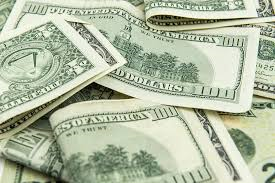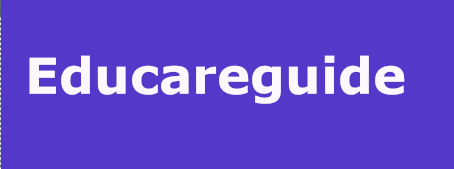There are three parties to a Bill of Exchange, and thus, Kenya is no exception in every country.

However, Educareguide believes that it is a document that plays a significant role in the settlement of debts in business.
Before we go to the details, let us look at some brief background information on the topic.
First of all, let us consider the meaning of a Bill of Exchange.
A Bill of Exchange is an unconditional order from one party (Drawer) to another party (Drawee), instructing the latter to pay a specific sum of money to another party (the Payee) at a particular date in the future.
As a result, you can identify from the definition that there are three parties to a bill of exchange.
Also, the parties to a bill of exchange are the Drawer, the Drawee, and the Payee.
What then are the Features of a bill of exchange? Find some of the Characteristics of a bill of the exchange below:
Click For The Summary Of This Guide
Features Of A Bill Of Exchange
Notably, the following is the nature of a bill of exchange:
- Firstly, it must be in writing.
- Secondly, the order must be unconditional, and this means that the debtor does not any option but to pay the amount stated on the Bill of exchange.
Find more about the characteristics of bills of exchange from our site HERE.
Now, let us look at the people involved in a bill of exchange are:
Parties Involved In A Bill Of Exchange Explained
The following are the participants involved in a Bill of Exchange. You might as well refer to them as the parties or terms used in the Bill of exchange.
The Drawer:
The Drawer is the person who writes the Bill. In essence, it could be understood that the Drawer is the creditor, and a creditor is a person to whom an amount of money is owed.
When a creditor sells goods to a customer, he may order that the customer pays the sum of money through a bill of exchange.
He will then design the Bill and send it to the debtor, who is the debtor.
The Drawee:
The Drawee is the person to whom the Bill is sent. The Drawee receives the Bill with all details written on it. The details include the amount of money to be paid, the date to pay, and the person to pay to (the Payee).
Here the Drawee is the debtor who might have bought goods on credit from the creditor. The Drawee may be the bank of the Drawer in some other scenario.
This is true because when you deposit money at a bank, you become the creditor, and the bank becomes your debtor because the bank owes you that sum of money.
The Payee:
The Payee is the person to whom the money is paid. He assumes the state of a beneficiary in the contract between the Drawer and the Drawee. Why is the Payee the beneficiary of the Bill of an exchange transaction?
This is because the Drawee pays the money to the Payee because the Drawer is obligated to the Payee. Obligated means that the Drawer owes the Payee, at the same time the Drawee owes the Drawer.
The Payee is the one who receives the amount that was ordered by the Drawee to be paid by the Drawee.
Importance Of A Bill Of Exchange
The following are the advantages and benefits of a bill of exchange:
- Bill of exchange is that it aids international trade.
- Also, the Bill of exchange helps in the easy settlement of a debt.
Specimen Of Bill Of Bill Of Exchange
We have a format of a bill of exchange here for you. Please a picture or an image of a Bill Of Exchange Below:

Bills Of Exchange In Accounting
Bill of exchange comes out in many accounting topics. In fact, due to the usage of bills of exchange for financial transactions, an accountant cannot stay away from the use of a bill of exchange.
Really, a bill of exchange is an integral part of the settlement process in accounting.
For instance, it is recognized as a payment from debtors for the settlement of the debts. Therefore, in the debtors’ control account, the Bill of exchange is treated as a credit entry.
On the other hand, in the Total Creditors control account, the Bill of exchange is treated as debit entry, thereby reducing the company’s indebtedness to creditors.
Other Facts About Bill Of That Is Well Noting
- Bill of exchange is primarily used in international trade to settle payments for goods and services.
- Format of a bill of exchange: – From the above, it could be realized that its function and the parties involved depict the very format of a bill of exchange.
- Surely, a bill of exchange is used for both inland trade and international trade. Thus, we have an inland bill of exchange and an international Bill of exchange. All these types of Bill of exchange exist for use in business.
- Bill of Exchange is different from a Promissory Note. This is because a bill of exchange has three parties (Drawer, Drawee, and Payee), whiles a promissory note has only two parties (Drawer and Payee).
- A bill of exchange is different from a cheque. Though a bill of exchange plays a similar role as a cheque, a bill of exchange is different from a cheque. It is different because it is a written document of how much a debtor owes a creditor.
- Check out Investopedia’s definition of the Bill of exchange HERE
- Please find out more information about the Bill of exchange from our other post.
You Might Have Interest In The Following As Well:
- What are the qualities of money?
- The problems that developing countries face in the world?
- What is a valid contract in business – the principles of contract.
- The meaning of consideration in Law.
- Which organizational structure will best fit your business organization? Find out here.
- What is the importance of planning to the success of your business?
- Which laws must businesses conform to?
- Is every business contract valid? Find the answer here.
- What are the types of contracts your business may enter into?
- The ways that money is controlled in a country.
- What is a private limited company?
- Sources of finance for private enterprises.
- The best ways you can manage your time as a business person.
- What are the best ways you can brand your products and your enterprise?
- How workers unions can impact the profitability of your business.
Conclusion:
I believe Educareguide has helped you to understand this subject matter. Also, much more information is available on our website to help you in your education.
Furthermore, if there is any contribution, comment, or concern you want to make, it is warmly welcomed on our site. Thus proceed to Login or Register to submit your post.
Now, please, subscribe to Educareguide and contact us for further assistance for your education. Finally, please fill out the contact form on the sidebar to reach us.
Nevertheless, do not forget to comment in the comment section below. Indeed, we will gladly appreciate knowing how you think about this article. Thanks.





